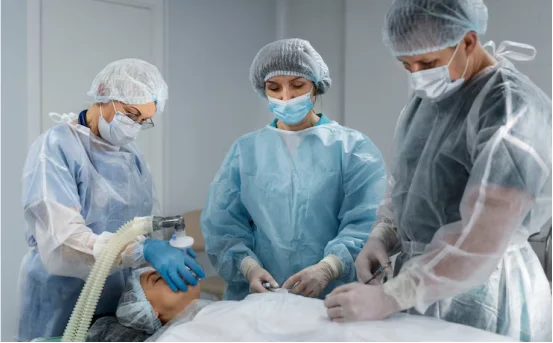Gum health is an essential part of maintaining a beautiful smile and preventing long-term dental problems. One common issue people face is gum recession, where the gum tissue pulls away from the tooth, exposing the root. This condition can lead to sensitivity, cavities, and even tooth loss. Thankfully, gum graft surgery is a proven treatment that restores gum tissue and protects your teeth.
Healthy gums form a protective seal around the teeth, shielding the roots and underlying bone from harmful bacteria and plaque buildup. However, over time, many people experience a condition known as gum recession, a gradual process where the gum tissue pulls away from the tooth, exposing more of the tooth or even its root surface.
What is Gum Graft Surgery?
Gum graft surgery (also known as gingival graft surgery) is a dental procedure used to treat receding gums. It involves taking healthy tissue usually from the roof of your mouth or nearby gums and attaching it to the areas where your gums have worn away. This not only improves the appearance of your smile but also helps protect the exposed tooth roots from tooth decay, sensitivity, and further damage.
Why is Gum Graft Surgery Needed?
Receding gums can be caused by various factors, including:
- Aggressive brushing
- Gum disease (periodontitis)
- Tobacco use
- Hormonal changes
- Genetics
- Poor dental hygiene
When the gum tissue recedes too much, the tooth roots become exposed. This can result in:
- Tooth sensitivity to hot or cold
- Increased risk of cavities near the roots
- Bone loss around the teeth
- Aesthetic concerns like “long teeth”
If left untreated, gum recession may eventually lead to tooth loss. Gum graft surgery stops the progression and helps regenerate lost tissue.
Why Do Gums Recede?
Gum recession is often caused by a combination of factors, including:
- Periodontal disease (chronic inflammation due to plaque and tartar buildup)
- Aggressive tooth brushing
- Tobacco use
- Genetics (some people naturally have thinner gum tissue)
- Hormonal changes (especially in women during pregnancy or menopause)
- Clenching or grinding teeth
- Crooked teeth or misaligned bite
Receding gums don’t grow back naturally, which is why surgical intervention like gum grafting may be required in moderate to severe cases.
The Gum Graft Procedure: What to Expect?
The surgery is typically done under local anesthesia and takes about 45–90 minutes. Here’s what usually happens:
- Preparation :- The affected area is cleaned and numbed.
- Tissue Harvesting :- The graft tissue is taken from your palate or nearby gum area.
- Graft Placement :- The harvested tissue is placed over the receded gums and stitched in place.
- Healing Protection :- A periodontal dressing or bandage may be applied for comfort and protection during healing.
In some cases, tissue banks or synthetic grafts are used to avoid harvesting from your own mouth.
Gum Graft Surgery Recovery and Aftercare
Recovery from gum graft surgery is generally smooth if you follow your dentist’s instructions. Most patients heal within 1 to 2 weeks. Here are some important aftercare tips:
- Eat soft foods like yogurt, mashed potatoes, and smoothies for a few days.
- Avoid brushing the surgical area until advised.
- Use prescribed mouthwash to prevent infection.
- Take pain relievers as recommended.
- Avoid hot or spicy foods, smoking, and strenuous activities during recovery.
Some swelling and mild discomfort are normal. If you notice excessive bleeding, pain, or signs of infection, contact your dentist immediately.
Risks and Complications
Though gum graft surgery is safe, there are a few risks, including:
- Bleeding or swelling
- Infection
- Graft failure
- Uneven healing
Choosing an experienced periodontist and following aftercare guidelines reduces the chance of complications.
Long-Term Results & Prevention
When done correctly, gum graft surgery offers long-lasting protection and aesthetic improvements. To maintain your results:
- Brush gently with a soft-bristle toothbrush
- Use a non-abrasive toothpaste
- Avoid tobacco products
- Visit your dentist regularly
- Get professional cleanings twice a year
- Wear a nightguard if you grind your teeth
Conclusion
Gum recession is more than a cosmetic issue; it can lead to serious oral health problems if left untreated. Gum graft surgery is a trusted and effective treatment that not only improves the look of your smile but also protects your teeth from damage.
Fortunately, gum graft surgery offers a reliable and proven solution. This specialized procedure not only restores the natural gum line but also provides a protective barrier over the exposed roots, helping to prevent future damage. Beyond the health benefits, gum grafting can significantly enhance the aesthetic appearance of your smile, especially if your teeth appear overly long or uneven due to gum loss.























